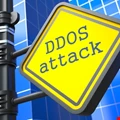Infosecurity Opinions

Strengthening Authentication Measures for Enhanced Mobile Security
Great authentication measures are still prone to thievery.

Towards More Enterprise Security for IoT
Which standards are needed to ensure IoT can be used in enterprise security.

Cyber-Threat and Regulation Priorities for CISOs
Future CISO priorities include dealing with DDoS, GDPR, and third-party threats.

Is your Cloud Governance Agility Enough to Keep up with DevOps?
Agility rules when it comes to DevOps, yet cloud governance models follow structured methods.

History Repeating: Top Five Database Threats
It might be time for some organizations to get back to the basics when it comes to database security: best practices, internal controls, and database security solutions.

Critical Takeaways from WikiLeaks 'Vault 7' Release
Three particularly critical cybersecurity issues that the WikiLeaks release brings into stark focus.

The Secret to Winning the War for Security Talent
Hiring the right security staff is the most critical for managing risk.

The Data Centre as a Time Machine
Yet to realize the potential impact of digitization, we need to help businesses get to grips with the reality of the cybersecurity threat landscape we now find ourselves in.

Enterprise Security for the Home
The arrival of the IOT era means it is time that Internet security is taken more seriously by everyone and that the answer is to introduce enterprise-class systems and controls to protect home networks.

Measure ROI of Phishing Awareness and Education Training
While employees are often considered the front line of protection, they’re also the individuals most likely to voluntarily turn over information.

Five Questions Board Members Should Ask Their CISO
Security isn’t something that can just be swept under the rug while the board and executive team plans on just pointing figures if something bad happens

How to Defuse the BYOD Bomb Without Going Nuclear
For many organizations, there is another more practical way to subdue the BYOD goliath without killing off all employee freedom to use preferred devices for work.

Collaboration is the Key to Effective Cyber-defense
Every year, cybersecurity rises up the business agenda. Today, putting the right protection and protocols in place to defend against growing cyber-risks is front of mind for boardrooms around the world

Security Priorities and Multi-Cloud Migration - What to Secure First
Securing, patching and isolating the cloud workload should be the first priorities.

How to Assemble a Solid Security Team
What does an ideal group look like? It draws from several functions and departments—the C-suite, legal, human resources, information technology, and, of course, security.

SAML - The Vital Hidden Ingredient in Effective Single Sign-On
SAML provides the capability for users to access resources from entirely separate domains using their own credentials.

Iot Botnets are Coming, How Can You Escape Them?
We probably weren’t expecting our sites and services to be collateral damage in a small but nasty war in the world of Minecraft gaming server providers.

Standards and Security: The Great DDoS Challenge
DDoS attacks are now moving towards more mission critical operations in hospitals, banks and universities.

Ransomware "Your Money, or your Data!"
There may never be a cyber-silver bullet to protect you 100% of the time against these pervasive threats; those who claim they can, will inevitably face disappointed end users.

A Growing Talent Shortfall Can Leave Apps Vulnerable
The skills shortage will prove to be an unlikely cause of serious application security weaknesses and data theft in the coming years.























